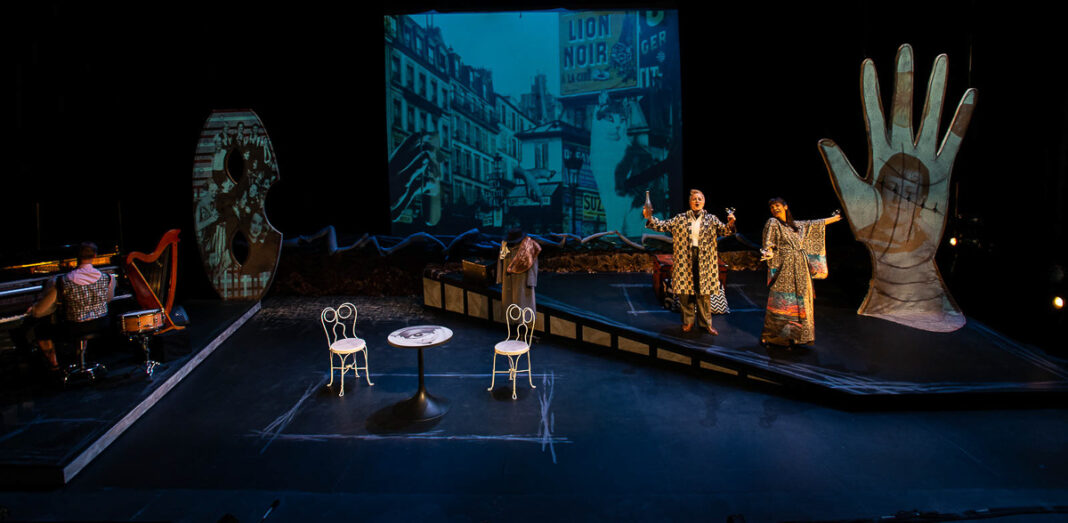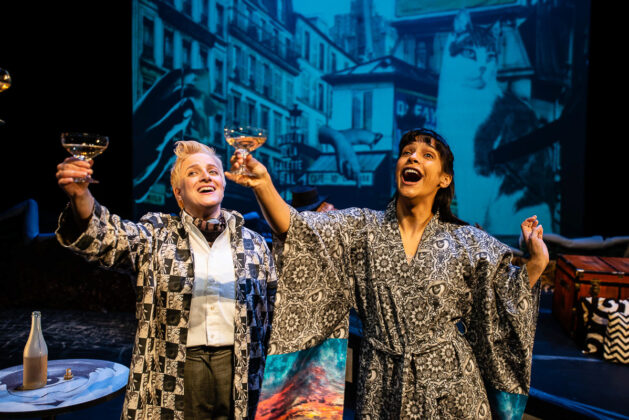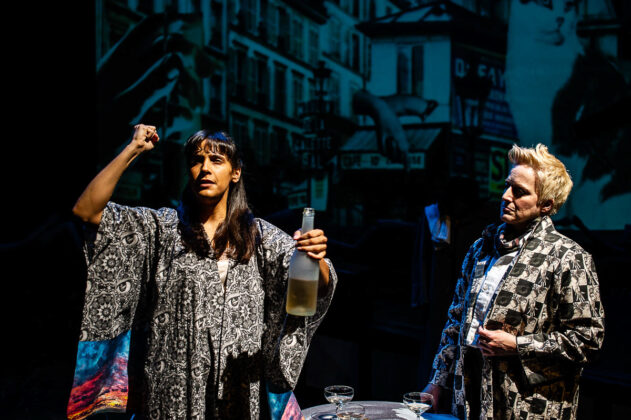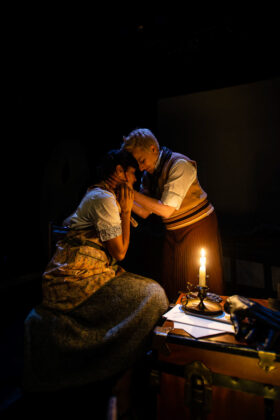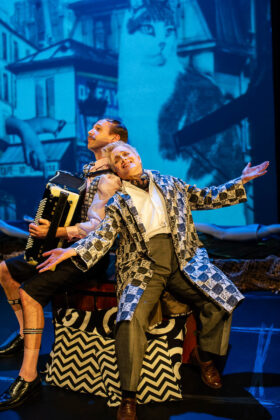TW: This play contains discussions of suicide, neo-Nazism and the Holocaust, sexuality and insinuated violence. Those seeking emotional support and crisis referral services can call the mental health crisis service line: 1-866-996-0991
In times of war, will love or hate ultimately prevail? In the Great Canadian Theatre Company’s production of Heartlines, as part of the TACTICS Mainstage Series, the cast and crew grapple with this timeless debate while shedding light on a story that history forgot.
Written and produced by Sarah Waisvisz, Heartlines tells the story of artists Lucy Schwob and Suzanne Malherbe under the pseudonyms of Claude Cahun and Marcel Moore, respectively, during Nazi occupation of France during the Second World War. As lesbians, artists and Jews, Cahun and Moore are painstakingly aware that their identities are in distinct contrast to Hitler’s ideal German race and that there are fatal consequences often associated with them. Cahun and Moore learn to use their art as a form of political resistance, powerfully demonstrating that, in the face of adversity, love conquers all.
Cahun and Moore were real historical figures that endured and resisted Nazi occupation in France during the Second World War. Compelled by this forgotten story, Waisvisz chose to highlight these two artists to form the basis of her play. Using the couple’s artwork and documentations as a starting point, she creatively filled in the gaps missing from the historical account to create a lively, multi-dimensional story about the power of love in times of oppression.
In a time when the terms “gender-queer” and “non-binary” were not yet socially prevalent, Margo MacDonald portrayed Cahun’s identity struggles honestly and passionately. As her character existed somewhere between the binary binds of male and female, MacDonald brought tremendous emotion and expression to the role of boldly navigating life without an accurate label to fit her identity. In times of hardship and joy, MacDonald made it easy for audience members to connect with her character.
In the role of Moore, Cahun’s vaillant romantic partner, Maryse Fernandes brought energy and intensity to her performance. During the play’s many vaudevillian autobiographical recounts, Fernandes added to the comedic effect with tremendous physicality and boisterous movements. As the play progressed and Marcel began to experiment with art as a form of political resistance, Fernandes portrayed her character’s arch beautifully and came to bear the weight of both hers and Cahun’s controversial identities.
Scottie Irving, an Ottawa-based musician and member of the nine-member pop band The PepTides, played live music for the duration of the performance. He showed incredible skill, often juggling multiple musical instruments at once such as the keyboard, accordion and harp. His music effectively set the mood of the scene, from a joyful Paris to a somber Nazi occupation and everything in between. MacDonald and Fernandes fed off the energy and cadence of Irving’s music, making for a more meaningful, multi-dimensional performance.
Designed by Andrea Steinwand, the set tastefully reflected the eclectic, surrealist art style of the play’s protagonists. Details such as mannequin arms lining the ocean waves in the set’s background and the large hand and mask on either side of the stage immersed audience members further into the artists’ eccentric world.
Heartlines was a shocking and resonating reminder of how many stories of queer and eccentric personalities have been left behind by history. Not only did these brave individuals fight for political freedom, they also fought for the acceptance of their own identities. In this production of Heartlines, the cast and crew passionately celebrated and gave historical relevance to Cahun and Moore’s artistic voices.
Featured image provided by the Great Canadian Theatre Company.


